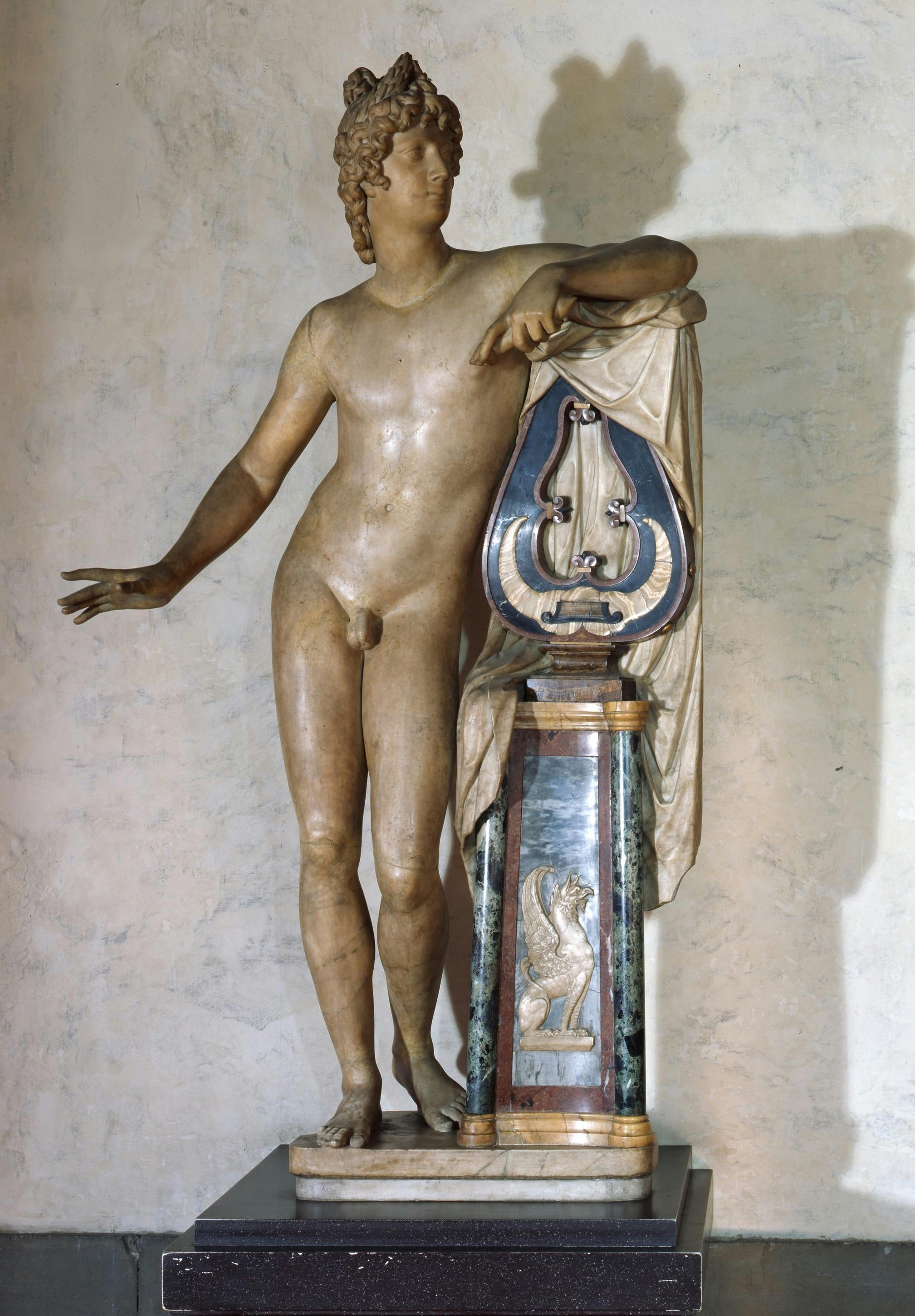Apollo Sauroctono
Roman art
The sculpture, whose origin is unknown, has been in the Gallery since 1565 and depicts the young god Apollo, lord of song and music, delicately leaning on a lyre, positioned on a support and partly covered by a cloak. Due to its type and position, it can be assumed that the work present here is largely the result of a heavy sixteenth-century restoration, carried out from original fragments (torso, pelvis, thighs) of a Roman replica of the more famous Apollo Sauroktonos by Praxiteles, made around 350 BC. The singular subject, which depicted the god in the act of killing a lizard climbing up a trunk, probably had an allusive meaning to Apollo's role as protector from evil. The musical instrument of the god and its support, decorated with a griffin, were therefore integrated in modern times (1586), probably by the restorer Giovanni Caccini who, not having recognised the statuary type, completed the gaps in the sculpture on the basis of the taste of his time, with abundant use of coloured marble incrustations.
Praxitéle, Catalogo della mostra di Parigi, pp. 226-227, n°55 (J.-L. Martinez) e bibliografia precedente.
